
How to Use GSM-GPRS Module: Examples, Pinouts, and Specs
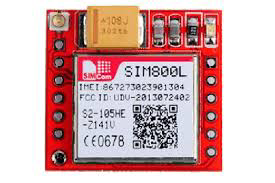
 Design with GSM-GPRS Module in Cirkit Designer
Design with GSM-GPRS Module in Cirkit DesignerIntroduction
The SIM800L is a compact and cost-effective GSM-GPRS module manufactured by SIM Com. It enables communication over mobile networks, allowing for voice calls, SMS, and data transmission via the General Packet Radio Service (GPRS). This module is widely used in IoT applications, remote monitoring, and control systems due to its small size, low power consumption, and versatile functionality.
Explore Projects Built with GSM-GPRS Module
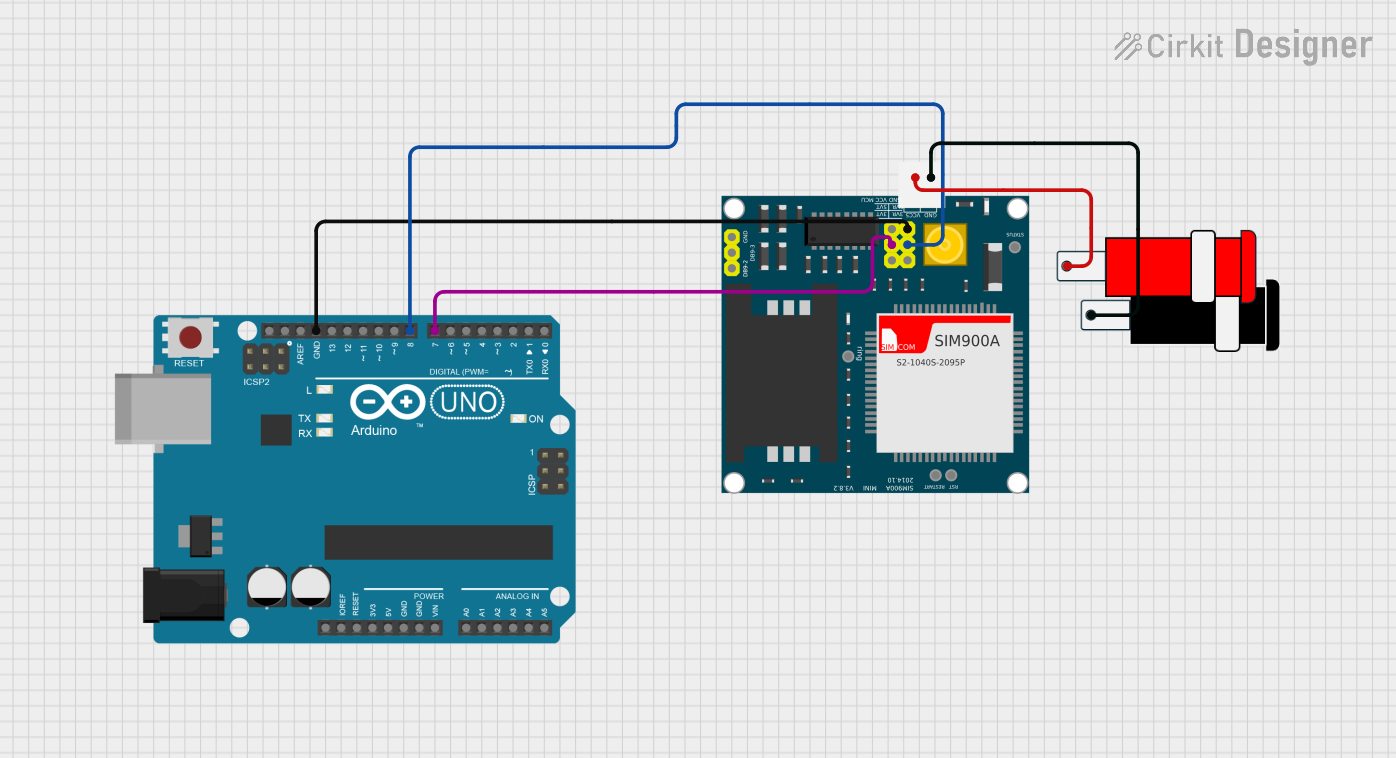
 Open Project in Cirkit Designer
Open Project in Cirkit Designer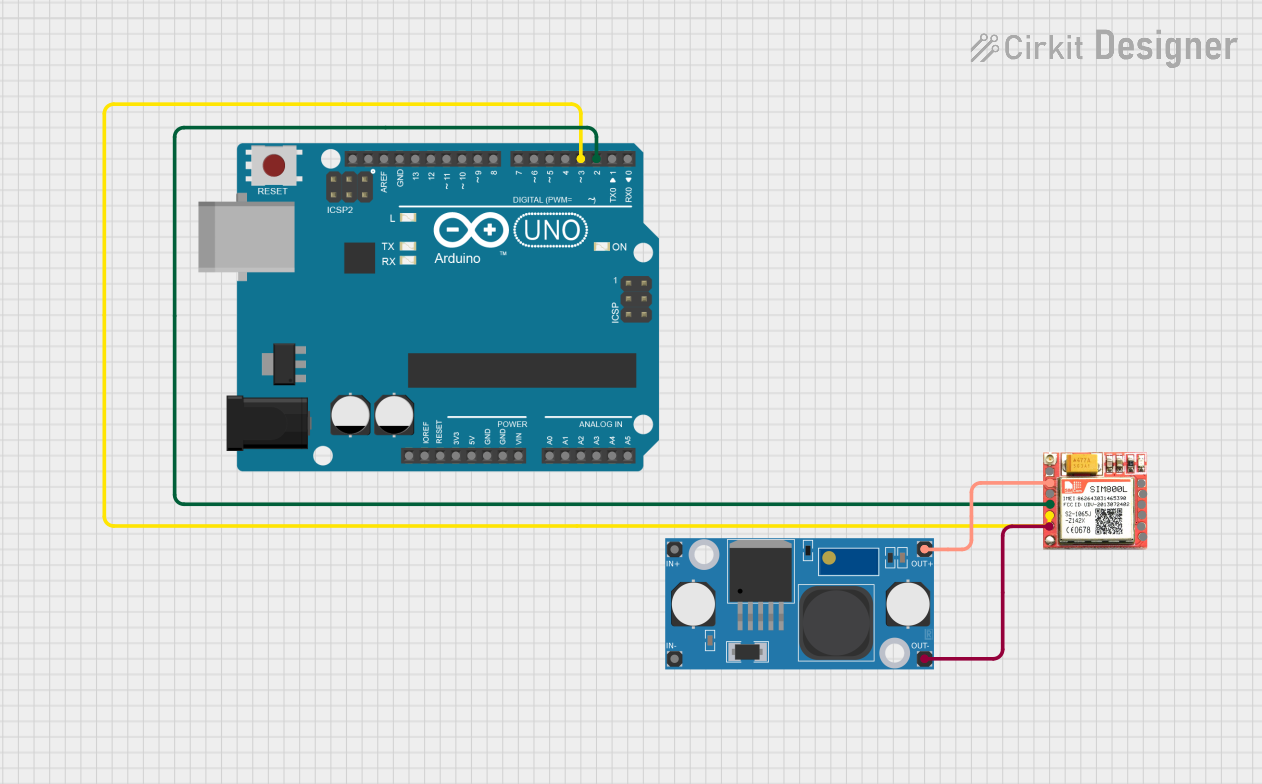
 Open Project in Cirkit Designer
Open Project in Cirkit Designer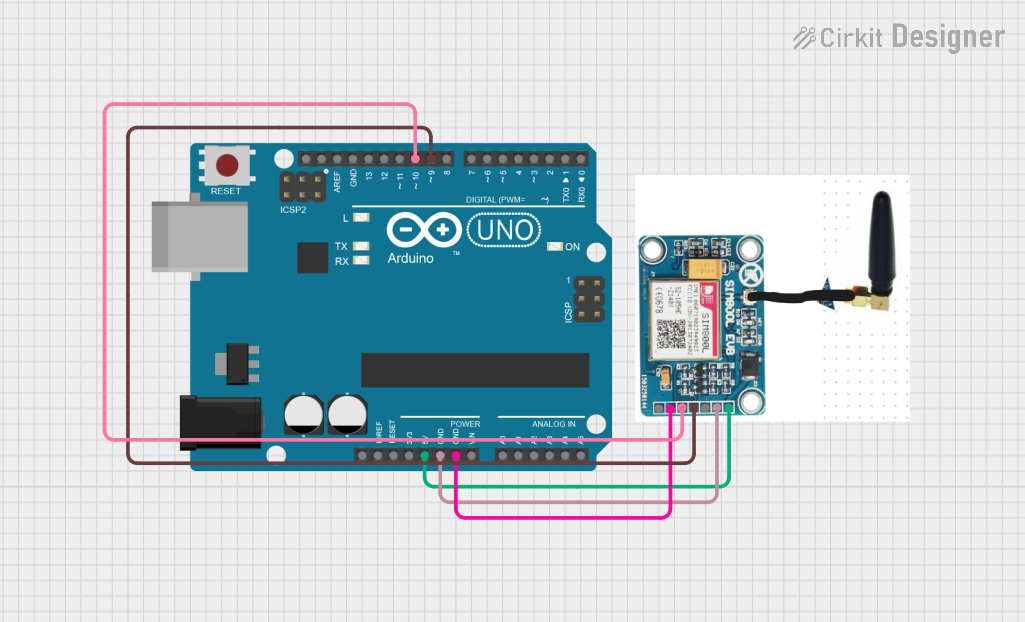
 Open Project in Cirkit Designer
Open Project in Cirkit Designer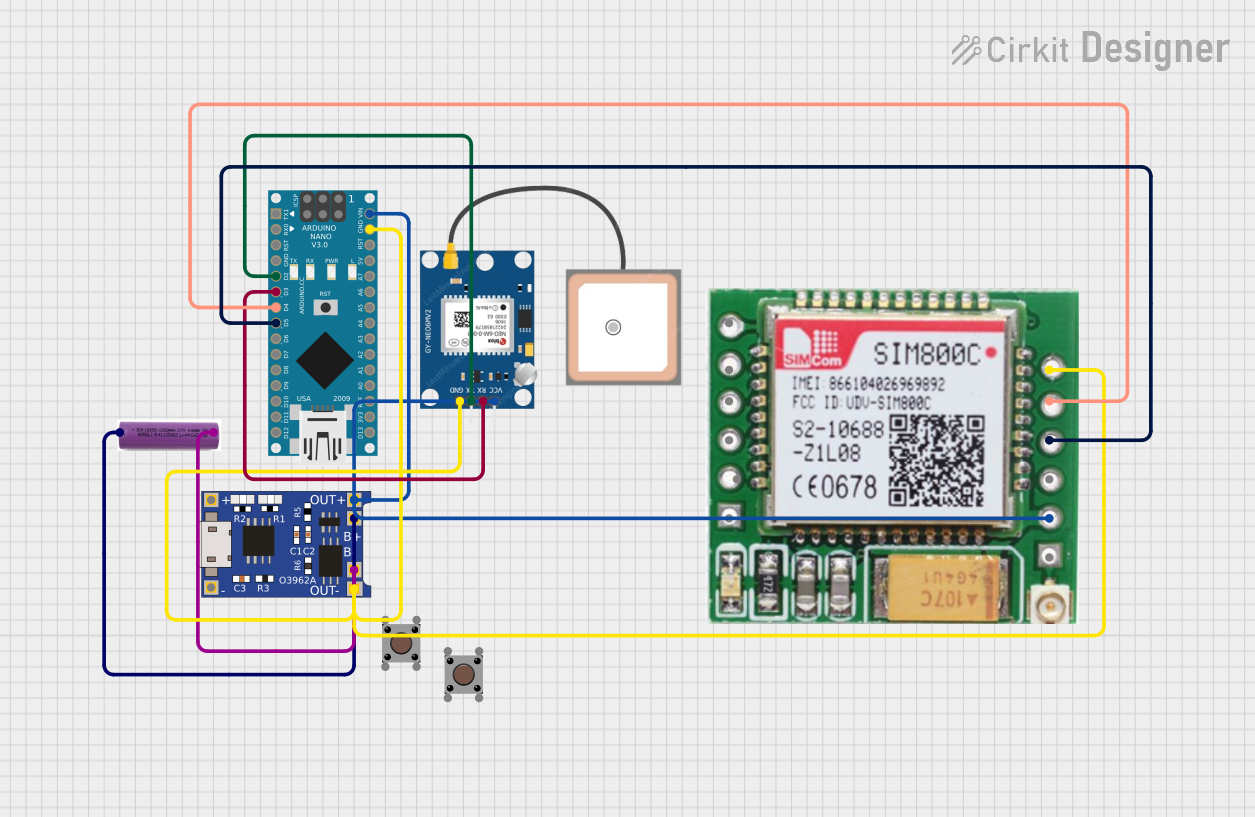
 Open Project in Cirkit Designer
Open Project in Cirkit DesignerExplore Projects Built with GSM-GPRS Module

 Open Project in Cirkit Designer
Open Project in Cirkit Designer
 Open Project in Cirkit Designer
Open Project in Cirkit Designer
 Open Project in Cirkit Designer
Open Project in Cirkit Designer
 Open Project in Cirkit Designer
Open Project in Cirkit DesignerCommon Applications and Use Cases
- IoT devices for remote monitoring and control
- GPS tracking systems
- Home automation and smart appliances
- SMS-based alert systems
- Wireless data transmission for industrial applications
- Remote weather stations
Technical Specifications
Key Technical Details
| Parameter | Specification |
|---|---|
| Manufacturer | SIM Com |
| Part Number | SIM800L |
| Operating Voltage | 3.4V to 4.4V |
| Recommended Voltage | 4.0V |
| Power Consumption | Idle: ~1mA, Active: ~250mA, Peak: ~2A |
| Frequency Bands | Quad-band: 850/900/1800/1900 MHz |
| GPRS Connectivity | Class 12 |
| Data Transmission Speed | Up to 85.6 kbps |
| Communication Interface | UART (3.3V logic level) |
| Dimensions | 25mm x 23mm x 3mm |
| Operating Temperature | -40°C to +85°C |
Pin Configuration and Descriptions
The SIM800L module has 12 pins. Below is the pinout and description:
| Pin Number | Pin Name | Description |
|---|---|---|
| 1 | NET | Network status LED (blinks to indicate GSM status) |
| 2 | VCC | Power supply input (3.4V to 4.4V, recommended 4.0V) |
| 3 | GND | Ground |
| 4 | RXD | UART Receive pin (3.3V logic level) |
| 5 | TXD | UART Transmit pin (3.3V logic level) |
| 6 | RST | Reset pin (active low, pull low for 100ms to reset the module) |
| 7 | VDD_EXT | External voltage output (not commonly used) |
| 8 | DTR | Data Terminal Ready (used for sleep mode control) |
| 9 | MIC+ | Microphone positive input (for voice communication) |
| 10 | MIC- | Microphone negative input (for voice communication) |
| 11 | SPK+ | Speaker positive output (for voice communication) |
| 12 | SPK- | Speaker negative output (for voice communication) |
Usage Instructions
How to Use the SIM800L in a Circuit
Power Supply:
- Use a stable power source that provides 4.0V with a current capacity of at least 2A to handle the module's peak power requirements.
- Connect the VCC pin to the power source and the GND pin to ground.
UART Communication:
- Connect the RXD pin of the SIM800L to the TX pin of your microcontroller (e.g., Arduino UNO).
- Connect the TXD pin of the SIM800L to the RX pin of your microcontroller.
- Ensure the logic level of the UART pins is 3.3V. Use a voltage divider or level shifter if your microcontroller operates at 5V.
Antenna:
- Attach an external antenna to the module's antenna connector for better signal reception.
SIM Card:
- Insert a micro SIM card into the SIM card slot on the module.
Reset:
- Optionally, connect the RST pin to a GPIO pin of your microcontroller for software-controlled resets.
Power On:
- Once all connections are made, power on the module. The NET pin will blink to indicate network status:
- Fast blinking: Searching for a network.
- Slow blinking: Connected to a network.
- Once all connections are made, power on the module. The NET pin will blink to indicate network status:
Important Considerations and Best Practices
- Use decoupling capacitors (e.g., 100µF and 10µF) near the VCC pin to stabilize the power supply.
- Avoid using the module with a breadboard for long-term projects, as the high current draw may cause unreliable connections.
- Ensure the antenna is securely connected to avoid signal issues.
- Place the module away from high-frequency noise sources to improve signal quality.
Example Code for Arduino UNO
Below is an example code to send an SMS using the SIM800L module with an Arduino UNO:
#include <SoftwareSerial.h>
// Define RX and TX pins for SoftwareSerial
SoftwareSerial SIM800L(10, 11); // RX = Pin 10, TX = Pin 11
void setup() {
// Initialize serial communication
Serial.begin(9600); // For debugging
SIM800L.begin(9600); // For SIM800L communication
// Wait for the module to initialize
delay(1000);
Serial.println("Initializing SIM800L...");
// Send AT command to check communication
SIM800L.println("AT");
delay(1000);
while (SIM800L.available()) {
Serial.write(SIM800L.read());
}
// Set SMS text mode
SIM800L.println("AT+CMGF=1"); // Set SMS mode to text
delay(1000);
// Send SMS
SIM800L.println("AT+CMGS=\"+1234567890\""); // Replace with recipient's phone number
delay(1000);
SIM800L.println("Hello, this is a test SMS from SIM800L!"); // SMS content
delay(1000);
SIM800L.write(26); // Send Ctrl+Z to indicate end of message
delay(5000);
Serial.println("SMS sent!");
}
void loop() {
// No actions in loop
}
Troubleshooting and FAQs
Common Issues and Solutions
Module Not Powering On:
- Ensure the power supply provides 4.0V and at least 2A current.
- Check all connections, especially VCC and GND.
No Network Connection:
- Verify the SIM card is active and has sufficient balance.
- Ensure the antenna is properly connected.
- Check if the module supports the frequency bands of your local network.
UART Communication Issues:
- Confirm the baud rate is set correctly (default is 9600).
- Use a level shifter if your microcontroller operates at 5V logic.
SMS Not Sending:
- Ensure the SIM card has SMS services enabled.
- Double-check the recipient's phone number format (e.g., include the country code).
FAQs
Q: Can the SIM800L module be powered with 5V?
A: No, the module requires a voltage between 3.4V and 4.4V. Use a step-down regulator if needed.Q: How do I reduce power consumption?
A: Use the DTR pin to enable sleep mode when the module is idle.Q: Can I use the SIM800L for GPS tracking?
A: No, the SIM800L does not have GPS functionality. Use a module like SIM808 for GPS.Q: What is the maximum length of an SMS?
A: The maximum length is 160 characters for a single SMS. Longer messages are split into multiple SMS.
This concludes the documentation for the SIM800L GSM-GPRS module.